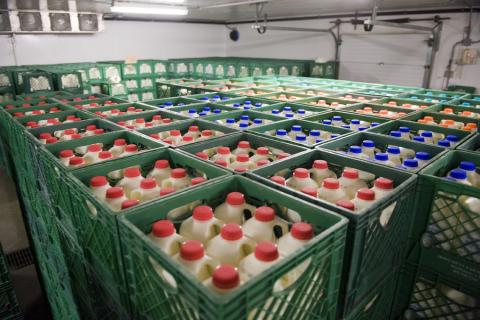HAYFIELD MANAGEMENT AND EVALUATION
HAYFIELD MANAGEMENT AND EVALUATION
Date: 2024-08-02
Time: 10 AM - 12 PM
Location:
Robinson Family Farm, 2328 Halls Stream Road, Pittsburg, NH 03592
Description: Description: This meeting will focus on hayfield care, including fertility, improvement and recovery of previous idle fields, and weedy species identification. Robinson Family Farm will highlight the hayfield improvement project they are undertaking with support from the Coös County Conservation District Climate Resiliency Grant. Other topical conservation efforts in the CT River headwaters will also be discussed. 2 – PAT Credits (pending) The event is rain or shine.
Organized by: NRCD-Essex County
To learn more, contact:
Sam Mayne
smayne.essexnrcd@gmail.com 8024245353
ORGANIC NO-TILL VEGETABLE PRODUCTION AND PROTECTED AGRICULTURE
ORGANIC NO-TILL VEGETABLE PRODUCTION AND PROTECTED AGRICULTURE
Date: 2024-08-21
Time: 5:30 PM - 7:30 PM
Location:
Uphill Farm, 148 Bray Hill Rd, Whitefield, NH 03598
Description: Join us for an evening discussion on organic no-till vegetable production. We will discuss vegetable production in northern New Hampshire, establishing and managing no-till systems, and explore pest exclusion systems for leek moth and swede midge. Uphill Farm will also highlight its efforts to transition towards precision irrigation with assistance from the Coös County Conservation District Climate Resiliency Grant.
Organized by: NRCD-Essex County
To learn more, contact:
Sam Mayne
smayne.essexnrcd@gmail.com 8024245353
University of Vermont Extension Annual Crops & Soils Field Day
The University of Vermont Extension Annual Crops & Soils Field Day is Thursday, July 25, 2024, 10:00 a.m. to 3:30 p.m.
Join us for our in-person on-farm Annual Crops & Soils Field Day at Borderview Research Farm on Thursday, July 25, 2024, 10am to 3:30pm. You will tour the research trials including perennial grasses, soybeans, small grains, hemp, hops, and other crops, as well as participate in one of the afternoon sessions. Lunch is included and certified crop adviser and water quality education credits available. A detailed flyer will follow. View our Conferences web page for updated information at http://go.uvm.edu/conferences
Registration is now open at https://go.uvm.edu/2024annualfieldday. You can register and pay online. If you cannot access the online registration, please call the UVM Non Credit Registration office at 802-656-8407 to register.
Cost is $25 per person for non-farmers and free to farmers.
Sponsors are welcome and can register and provide a sponsorship via the registration link noted above.
Interested in exhibiting? Contact Susan Brouillette at susan.brouillette@uvm.edu or 802-656-7611 at your earliest convenience as we have room for only 10 exhibitor tables. This will be on a first-come, first-served basis. You can also complete the Exhibitor Form and return it to Susan.
Register today at https://go.uvm.edu/2024annualfieldday


